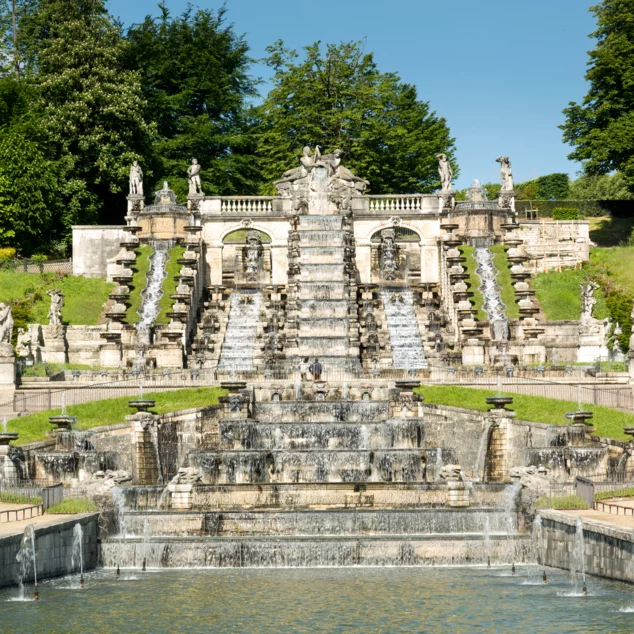Art & Architecture
article | Reading time7 min
Art & Architecture
article | Reading time7 min
As soon as you pass through the main entrance, you're invited to discover the rich past of the Saint-Cloud national estate. Furniture, objets d'art, portraits, models and prints evoke the life of the vanished château and its occupants. Open the door and step into history...
The museum is located in the Écuries Basses building, on the site of the apartments designed by Richard Mique, Queen Marie-Antoinette's favorite architect. As you enter, you are greeted by the statue of Philippe, Duc d'Orléans, only brother of Louis XIV. The château was built for him.
© Jean-Michel Thirion
In the next room, a scale model shows how the palace looked under the Second Empire, around 1860, after nearly two centuries of enlargement and renovation.
At the reception desk, photographic prints offer a glimpse of the sumptuous interior decor of the Second Empire. Opposite, views of the ruins show the desolation of these spaces after the palace burned down.
Séverine Drigeard
Seven statues, attributed to Guillaume Cadaine, Monsieur's ordinary sculptor, represent allegories in the form of mythological figures. Mercury personifies eloquence, Bacchus good food, the muses Calliope and Terpsichore, music and dance...
Mutilated and vandalized after the fire, they escaped the sale of materials from the dismantling of the ruins in 1892.
They are the only remaining vestiges of the château at Saint-Cloud.
© Jean-Michel Thirion
Three lead mascarons from the Grande Cascade are a reminder that Saint-Cloud's renown was also due to the ensemble of basins, fountains and gutters, of which the cascade is still the monumental highlight today.
The gardens were also home to small decorative buildings, known as fabriques, which have now been destroyed. Numerous drawings and engravings depict the Lanterne de Démosthène, erected in 1803 at the Balustrade viewpoint and demolished in 1870. A masterpiece by a Compagnon du devoir, the model of the Pavillon Turc recreates this other vanished factory, erected in 1833 in the Trocadéro landscaped garden.
Pierre Coudert
A sumptuous tea service from the Manufacture de Sèvres offers a surprising vision of the park during the reign of Louis-Philippe Ier, when the King authorized the passage of the Paris-Versailles railway line through the estate.
Landscape painter Jules André illustrates the beginning of transportation civilization and the irruption of modern times, with his images of railroads, smoking locomotives and metal bridges.
Pierre Coudert
In the main room, several portraits feature members of the d'Orléans family, such as the Regent - son of Monsieur and his second wife, Elisabeth-Charlotte de Bavière - and his children, Louis d'Orléans and Louise-Adélaïde d'Orléans, abbess of Chelles, depicted as a nun among her sheep. The third room features portraits of the château's 19th-century inhabitants, from the Restoration to the Second Empire.
A series of pieces of furniture, such as a prie-Dieu commissioned for Marie-Antoinette's chapel, Napoleon I's bed, or the console in the Duchess de Berry's boudoir, bear witness to the interior fittings of the vanished palace.
Made by the Manufacture de Sèvres, a number of tableware items bearing the Château de Saint-Cloud hallmark - plates, ice-cream scoops, decoction pots and teapots - evoke the daily life of the residence.
© Jean-Michel Thirion









